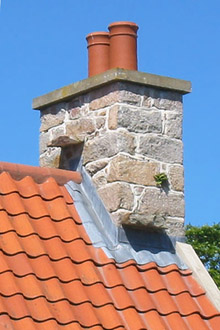
Chimneys and flues are installed to help make sure your home does not fill up with bad smelling, dangerous smoke. It’s great when your chimneys and flues work well enough to evacuate the smoke from your own home, however you need ensure your smoke doesn’t become a nuisance to others once it exits your roof. This is of particular concern when your home is located in a built-up or suburban area. The Building Code of Australia contains certain recommendations about chimney and flue heights, and their distances from other homes.
Weighing up options
Generally speaking, brick chimneys and open brick fireplaces are seen as less desirable options than slow combustion heaters and flues these days, because they're far less efficient, dirty and they emit a lot of particles into the air. Likewise, remodelling a chimney may be expensive, particularly if it's made of a material that's not commonly available, or it's ornamentally styled.
In many cases, existing brick chimneys are now being fitted with fireplace inserts to help improve efficiency. These inserts are required by the Australian Standard AS/NZS 2918 to be installed with a stainless steel flue. Often, it's more sensible in the long run just to install a fireplace insert with a suitably sized flue than to completely remodel or extend an existing chimney.
Chimney height regulations
Chimneys need to be high enough to ensure that smoke is directed away from where it might be harmful to your neighbours. The current code states that chimney openings need to be at least 300mm higher than the highest part of any roof within 3.6 metres of the chimney.
Flue height regulations
Flues need to be 600mm higher than the highest part of the roof within 3 metres. Flues that are more than 3 metres away from the highest part of the roof need to be 1000mm above the flue penetration.
Variable terrain
Homes built on varying terrain have their own set of chimney and flue regulations. This is because a chimney built on the roof of a house at the bottom of a hill could potentially release smoke that will travel uphill into a neighbour’s window. The variable terrain regulations vary across the country so as always, check with your local council to see which laws apply to you specifically.
For more information about flue heights and regulations, contact the Australian Home Heating Association (AHHA).


